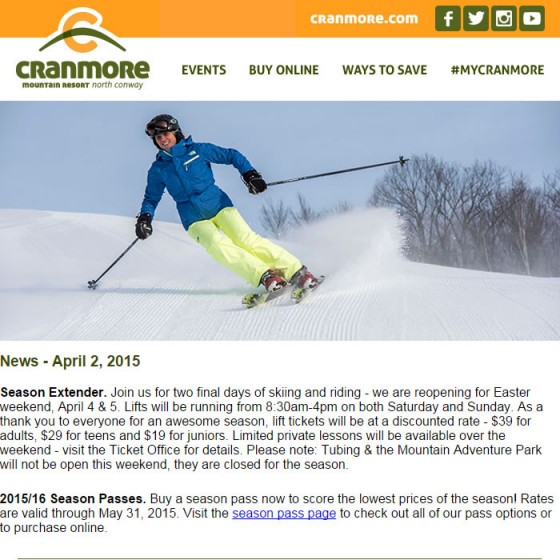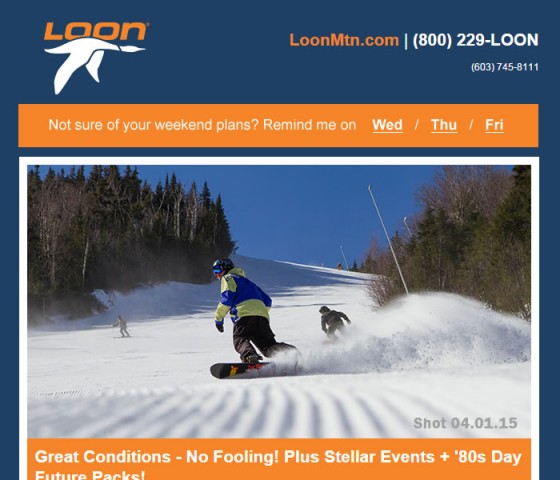Email Marketing (All)
What can a click tell us about the best day to send weekend deals?


BLANCHARD
Lately I’ve been fascinated by what a single click can tell me about the clicker. Sometimes the meaning is hidden behind the click, sometimes it’s requested. Either way, these little bits of info (and the opportunities for more) seem to be hiding everywhere in plain sight.
Now, on that note, look at the days resorts send newsletters and, as you’d expect, you’ll find nearly all are sent Tuesday, Wednesday, and Thursday.
But that’s quite the range, no? So what if that could be improved?
The Concept
The idea I want to share today is more about giving us a reason to look at old things with new eyes, so more than the idea (which may or may not work at all), I want you to use it as a starting point for your own out-of-the-box thinking.
But the basis for the concept is something we see over and over again in things like YouTube, Vimeo, Pocket, or even Facebook. The concept is simply:
“Read/Watch it Later”
You see content, you like it. But now’s not a good time so you click a button that helps you circle back around when you have a minute to give it the attention it deserves.
Before
As I often do, I’ll start with a couple nicely-designed templates from two New Hampshire resorts I enjoy following. I’ll put their subject lines above the screenshot as both reference the upcoming weekend.
Weekend Full of Events + Best Prices on 2015-16 New England Passes

One of those was sent on Thursday, the other on Wednesday.
After
So my tweak is two fold. The first is to send both of these on Monday.
The second is to change the header on both to something like this:

There are two thoughts behind this concept.
Idea #1
The first is simply that by getting lots of people to identify the best day for them to get your emails in their inbox, you’re, well, identifying the best day to put your emails in their inbox.
Idea #2
But the second, just like with YouTube or Pocket, is that not everyone is going to say the same thing. Right? Some will say Tuesday, others Thursday, some maybe even Friday.
But by getting them to CLICK, you now know who is who.
The Gist
Broad assumptions only work if they match the match a large enough chunk of the population’s behavior to be effective.
By asking simple questions that can be answered by a click (or by asking what clicks are already telling us), we not only prove assumptions to be right or wrong but also gain insight that allows one-to-one message-to-behavior matching that goes beyond guy instinct.
Food for thought.
About Gregg & SlopeFillers
I've had more first-time visitors lately, so adding a quick "about" section. I started SlopeFillers in 2010
with the simple goal of sharing great resort marketing strategies. Today I run marketing for resort ecommerce and CRM provider
Inntopia,
my home mountain is the lovely Nordic Valley,
and my favorite marketing campaign remains the Ski Utah TV show that sold me on skiing as a kid in the 90s.
Get the weekly digest.
New stories, ideas, and jobs delivered to your inbox every Friday morning.


